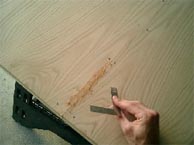Plastic was yesterday, liquid wood is the plastic of tomorrow
 Hamburg, Germany - Plastic was one of the great chemical inventions of the 20th century, but now liquid wood may be the plastic of the 21st century, according to a group of German scientists.
Hamburg, Germany - Plastic was one of the great chemical inventions of the 20th century, but now liquid wood may be the plastic of the 21st century, according to a group of German scientists.
Plastics are non-biodegradable as well and in many cases harbour carcinogens and other toxic substances.
And apart from all that, most plastics are based on petroleum, a non-renewable resource.
Crude oil is the basis of the chemical for plastics, notes Norbert Eisenreich, a senior researcher and deputy of the directors at the Fraunhofer Institute for Chemical Technology in Pfinztal, Germany.
As the price of crude oil increases, so does the price of plastics and the interest in finding replacements, he noted.
His team of German scientists have come up with a substance they call Arboform, which is basically liquid wood.
It is derived from wood pulp-based lignin, and can be mixed with hemp, flax or wood fibres and other additives such as wax to create a strong, non-toxic alternative to petroleum-based plastics, Eisenreich says.
But what exactly is liquid wood?
"The cellulose industry separates wood into its three main components - lignin, cellulose and hemicellulose," explains ICT team leader Emilia Regina Inone-Kauffmann.
"The lignin is not needed in papermaking, however. Our colleagues mix lignin with fine natural fibres made of wood, hemp or flax and natural additives such as wax. From this, they produce plastic granulate that can be melted and injection-moulded."
Car parts and other durable items made of this bio-plastic already exist, but it is not suitable for toys or household appliances in this form. To separate the lignin from the cell fibres, the workers in the cellulose industry add sulphurous substances. Toys and other household items should not contain sulphur, if for no other reason than that it can smell very bad.
The German researchers were able to reduce the sulphur content in Arborform by about 90 per cent.
Can the material be recycled?
"To find that out, we produced components, broke them up into small pieces, and re-processed the broken pieces - 10 times in all. We did not detect any change in the material properties of the low-sulphur bio-plastic, so that means it can be recycled," says Inone-Kauffmann. (dpa)